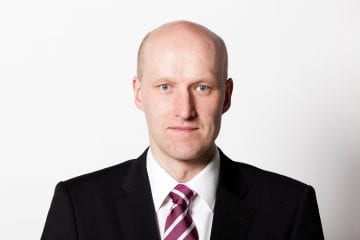Active RDI in Baltic Sea region – Case TUAS

Juha Kontio,
Dr., Dean,
Faculty of Engineering and Business, Turku University of Applied Sciences,
Finland
Since 2014 altogether 134 different projects have been funded from the Central Baltic Programme (CBP) and Finns have been involved in 120 of those. During this period, the total funding to Finland is over 85 million euro. Actors in South-West Finland have worked in 31% of all Finnish CBP projects. Turku University of Applied Sciences (TUAS) has been the most active actor in South-West Finland being coordinator or partner in 13 different CBS projects. Our projects have focused on CBP priorities P2 Sustainable Use of Common Resources, P3 Well-connected region, and P4 Skilled and socially inclusive region.
Turku University of Applied Sciences is one of the biggest universities of applied sciences in Finland. We have four major fields in education: engineering, business, health care and arts. The total number of students is around 11 000 at Bachelor and Master level. In addition to education, our second main task is applied research, development and innovation. We are a successful collaborator in several Horizon 2020 projects and an acknowledged expert in the coordination of Erasmus+ funded projects. Our RDI is tailored specifically to benefit the working life and cooperation with companies, public sector and communities is an essential part in our RDI activities. Our RDI is orchestrated in over 20 research groups that work in active collaboration with our regional, national and international networks. TUAS has defined the Baltic Sea region and the North Sea region as our key areas in international activities. In the following sections examples of our different RDI activities funded through CBP area are provided.
The DefenceArch project is a good example of priority 2 Sustainable use of common resources. The Baltic Sea archipelago of Stockholm, Åland and Turku is known as a nature tourism area. However, accessibility is still considered weak, cultural heritage, insular way of life and digital technology have not been utilized enough when creating valuable experiences for visitors. The overall objective in the project is to develop existing defence historical resources of Gålö seal farm, Bomarsund fortress, southern cape of Örö and Korpoström into appealing and sustainable destinations by increasing the awareness and experience value. In the end, the four attractions will form a themed tourism attraction highlighting the history.
Another example of a project in priority 2 is Heawater. The main idea is to achieve healthier water quality in the urban small rivers of the Baltic Sea catchment by the restoration of water bodies and preventing of nutrients and hazardous substances inflow from watersheds. The project is working on verifying and implementing most effective technological solutions that help to reduce pollution loads from/to small urban rivers in Tallinn (EE), Turku (FI) and Söderhamn (SE). Implemented methods will help to restore water quality and biota of the rivers and reduce pollution.
For priority 3, Well-connected region, the Baltic Loop project is an interesting example. The project focuses on developing solutions to transportation bottlenecks along the East-West corridors to smoothen the transportation flows. The Baltic loop consists of three separate gateways between: Orebro, St. Petersburg either via Turku, Tallinn or Riga. Bottlenecks are solved by tackling cross-border challenges and focusing on the sea and harbour development. Furthermore, business models for sustainable intermodal transport are created and good governance and stakeholder dialogue is linked. The activities aim to cut travel times, by easing the access from the local traffic system to the gateway, develop the modal shift of goods specifically from harbours to roads and the last mile simultaneously also decreasing the emissions.
Finally, OnBoard Med is an example for the priority 4 Skilled and socially inclusive region. The shipping industry has become multinational, therefore recognizing problems in education cannot easily be solved on a national level. The overall objective of the project is to harmonize and develop courses in maritime emergency management, medical treatment and occupational safety. Innovative learning methods, e-Learning and simulation, will be utilized in building the courses. The expected improvements in education and maritime safety are significant and will hopefully become the standard in the field.
The selected examples above show a small portion of the wide variety of RDI activities TUAS is doing. These examples underline the strong connection to working life and our commitment to Baltic. Our applied RDI is solving real challenges and creating usable solutions today. TUAS will continue this work for better tomorrow and future.
Email: juha.kontio@turkuamk.fi
Expert article 2821
> Back to Baltic Rim Economies 4/2020
To receive the Baltic Rim Economies review free of charge, you may register to the mailing list.
The review is published 4-6 times a year.
